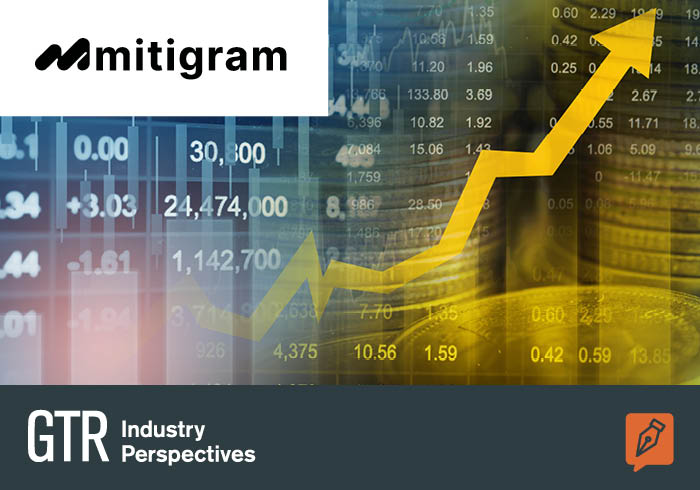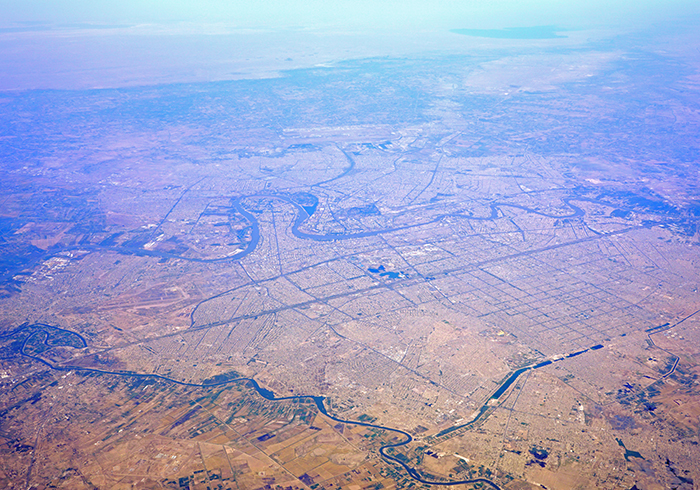Unlike in many areas of financial services, trade finance does not have robust and widely available market data on pricing that can be useful for both banks and corporates.
But is that about to change?
In this Industry Perspective, Joshua Kroeker, chief product officer of trade finance platform Mitigram, explains how the company is collating aggregated industry data on pricing requests from corporates, and quotes from banks, to build a clearer picture of the market for products such as letter of credit (LC) confirmations.
The data, Kroeker explains, will help corporates and banks matchmake more efficiently and reduce wasted time and effort when going to market.
Mitigram, which is backed by Nordic institutional investors, provides end-to-end solutions to streamline trade finance and has facilitated over US$150bn in trade flows.
GTR: Why is a lack of market data in trade finance a problem for banks?
Kroeker: The absence of market data is very challenging for banks. Without such data showing trends in pricing and what their peers are offering, banks find it difficult to know if the rates they are quoting are in line with the market. When they lose or win business, they can’t be fully confident if it has been influenced by where their pricing sits compared to their peers.
Without good data insights, banks do not quote consistently, which also impacts the returns they receive on their correspondent banking network. It is increasingly challenging for banks to justify maintaining a wide network of bank relationships due to the cost of capital and know-your-customer processes, so they need to better forecast demand and growth in various sectors. To maximise the return on their risk-weighted assets, they need to have data and know what is out there in the market, rather than waiting for someone to bring them a request for finance which may not even go to the right department or even country. If we can remove all these processes and connect banks to an efficient market for bank-mediated trade finance, then the business will grow in a sustainable way, and that is what banks want.
GTR: Does a lack of data also impact corporates?
Kroeker: Corporates struggle with different aspects of the problem. They can never be sure if the rate they are getting from their banks is fair, or if they should go back to the market. Trade finance is actually a very opaque market driven by relationships. Besides Mitigram, there is nowhere right now where you can find what the cost of 90-day Bank of China risk, for example, is being priced at – and that is rare in the financial world. When the risk party is rarer, say a local bank in East Africa, then the market is even more opaque.
It is also difficult for corporates to easily know which banks they should invite to get a quote on a particular risk or product. Experienced trade professionals within corporates are often proud that they get what they believe are good rates from banks. Many are surely correct, but without data, how do you define ‘good’? And can ‘good’ be bettered? It’s not truly possible for corporates to measure their performance without a benchmark.
More broadly, many firms struggle to understand what their trade finance operations are costing them due to lack of technology and data, especially for traditional trade finance related to LCs and guarantees.
GTR: How does Mitigram overcome those problems?
Kroeker: The core of Mitigram is using data to help connect the right banks to the right transactions. We have amassed a lot of data because we have 10 years of third-party risk data, covering over 1,000 issuing banks from all over the world. We can help corporates to find the right bank, benchmark their business to what is happening in the market, and even introduce a new structure of instrument that could help them even further.
When expanding to a new market, we want to help corporates to be able to accurately forecast what financing will be available, what it will cost, and the differences between various instruments. Once you have that information, you can start to see that the price of finance is not consistent; it changes quite a lot depending on what banks you invite to finance certain transactions, and what’s happening in the external market.
Our solution is all about reducing the noise and unnecessary work that banks and corporates put into handling transactions, and avoiding either side spending time on transactions that a particular bank will not be interested in or provide a quote for.
GTR: What do Mitigram’s new Market Insights features allow corporates and banks to do?
Kroeker: The platform is all about efficiently matching up banks and corporates to help them both avoid wasting time sending or responding to pricing requests that are unlikely to lead to a fruitful deal.
If you are a corporate exporting to a new market that you’ve not previously had to use your bank for, you can use Mitigram to assess the likely price for an LC confirmation for a certain market. Users will be able to see the trends in quotes for specific banks or markets, to gauge what quotes are within market norms.
Drilling further into the data, it can even show corporates the optimum number of invites they should send to banks. Banks track the number of quotes they get, and if they respond to a lot of quotes from a particular customer but only win a small share of the business, they may stop responding. Therefore, the data can help corporates understand where the sweet spot is of how many requests to send, and which are the correct financial institutions to send them to.
The data also shows the correlation between the number of quotes received and the ultimate confirmation fee paid. For example, it shows us that while on one hand, seeking a quote from one or two banks means corporates will be paying a higher price, there is also a price floor and after a certain number of quotes are received, the price won’t get any lower. For banks, they may also see opportunities for new business in cases where a corporate is only approaching one or two of their peers or in markets with little competition.
GTR: How can banks be sure that their sensitive data won’t be revealed?
Kroeker: Protecting everyone’s individual data is very important. The data we show on the platform is always aggregated data, meaning specific individual bank prices are not shown. Pricing is only displayed in cases where there were at least three corporates requesting a price from an issuing bank, and at least three banks have responded, so users won’t be able to reverse engineer any bank quotes. We use all the bells and whistles of modern technology to ensure the data is kept safe and secure.






